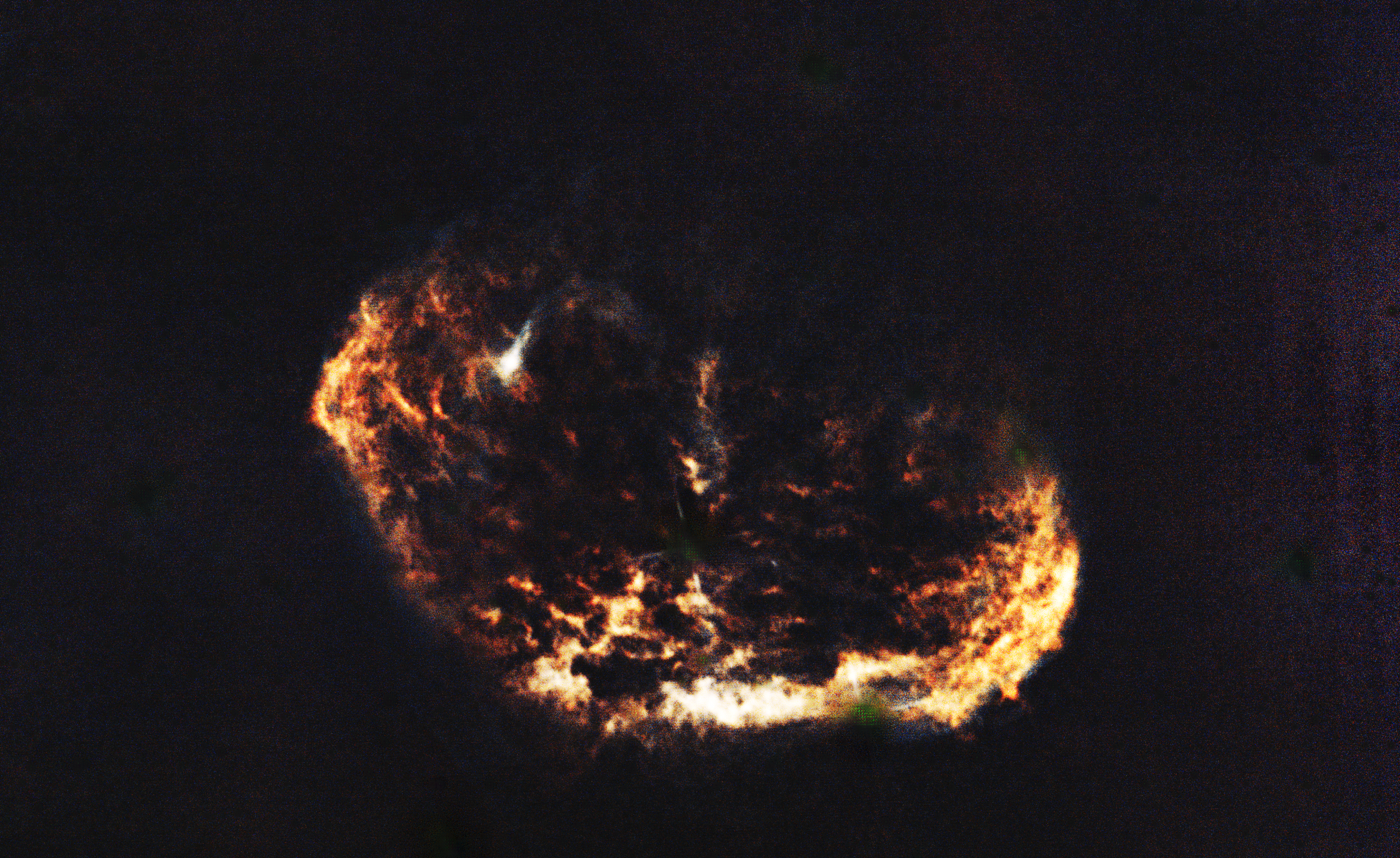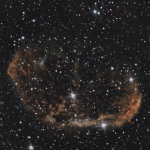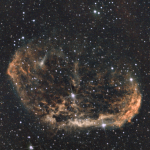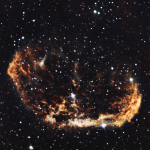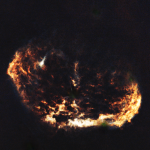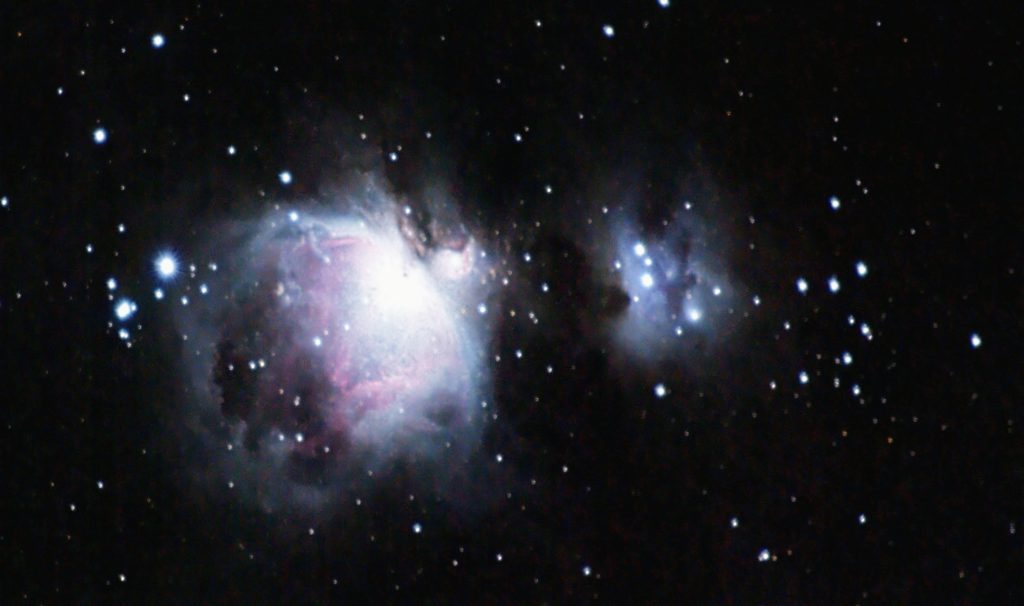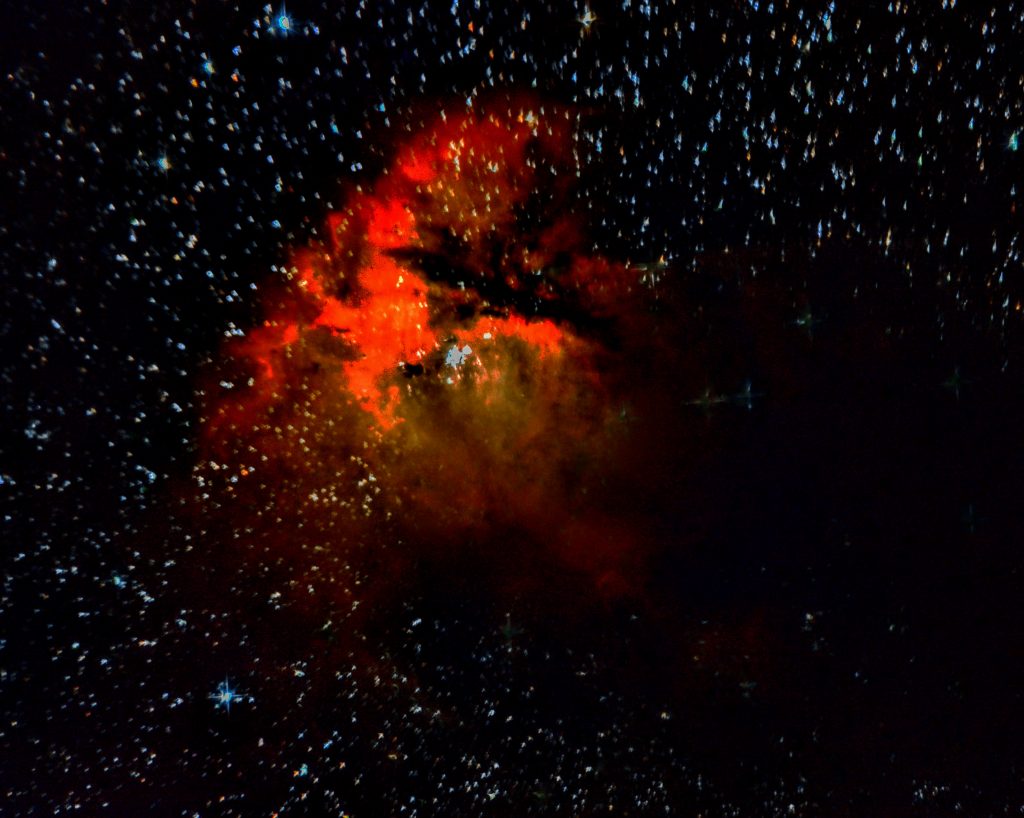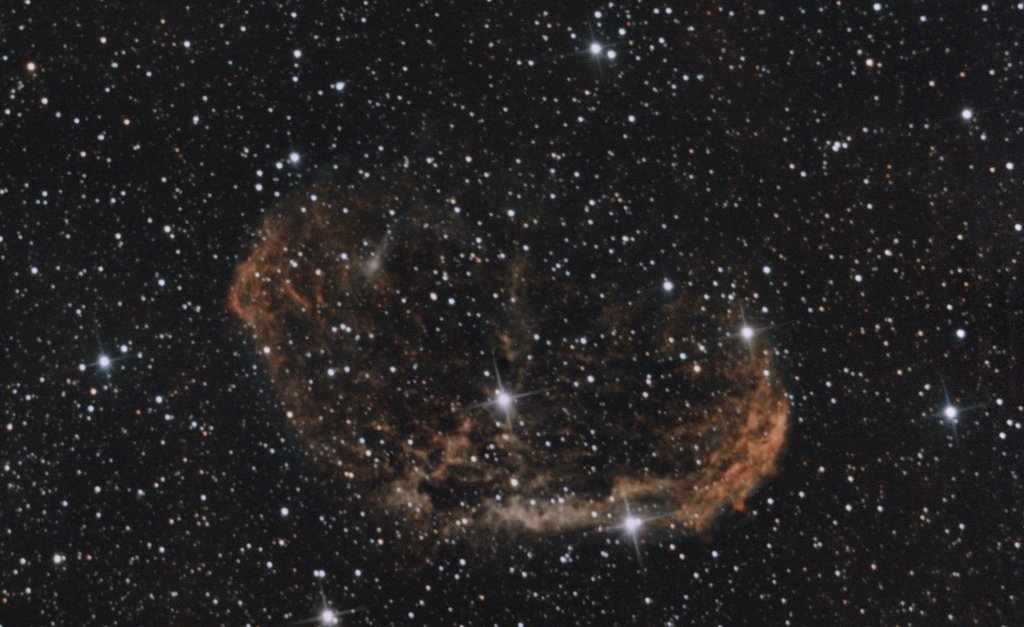
🌙 NGC 6888 – The Crescent Nebula
Hidden within the rich star fields of Cygnus, about 5,000 light-years away, the Crescent Nebula (NGC 6888) is a spectacular emission nebula shaped by the powerful winds of a massive Wolf–Rayet star (WR 136).
Over hundreds of thousands of years, this dying giant has shed its outer layers, creating a cosmic bubble of glowing hydrogen and oxygen gas. As the stellar wind from WR 136 collides with slower-moving material from earlier stages of the star’s life, it produces shock waves that illuminate the nebula in stunning detail — arcs and filaments that shimmer red (Hα) and blue-green (O III).
For astrophotographers, NGC 6888 is both a technical challenge and a reward — faint outer structures require long integration times and narrowband filters, but the intricate filaments and sharp edges make it one of the most photogenic objects in the summer sky.
🧠 Key Facts
| Feature | Details |
|---|---|
| Object Type | Emission Nebula / Wolf–Rayet Shell |
| Catalog Names | NGC 6888, Caldwell 27, Sharpless 105 |
| Constellation | Cygnus |
| Distance | ~4,700 – 5,000 light-years |
| Apparent Size | ~18′ × 12′ |
| Central Star | WR 136 (HD 192163) |
| Magnitude | ~7.5 (surface brightness faint) |
| Ionized Elements | H α (red), O III (blue-green) |
| Best Season (Northern Hemisphere) | June – October |
| Best Equipment | Medium focal length telescope (600–1000 mm) + narrowband filters (Hα + O III) |
Taken with
- Skywatcher Explorer 200/1000
- Touptek 183 CA
- On Skywatcher EQ 5 Pro Mount
- Guide scope TS Optics 50/90
- Guide Camera Touptek 327C
- Sequencer NINA Advanced Sequencer.
- Guiding with PHD2
- Exposures 48 x 300 secs
- Stacking 41 Frames in ASTAP
- Streach and Beackground removeal with Siril & GraXpert
- Final Touch GIMP

